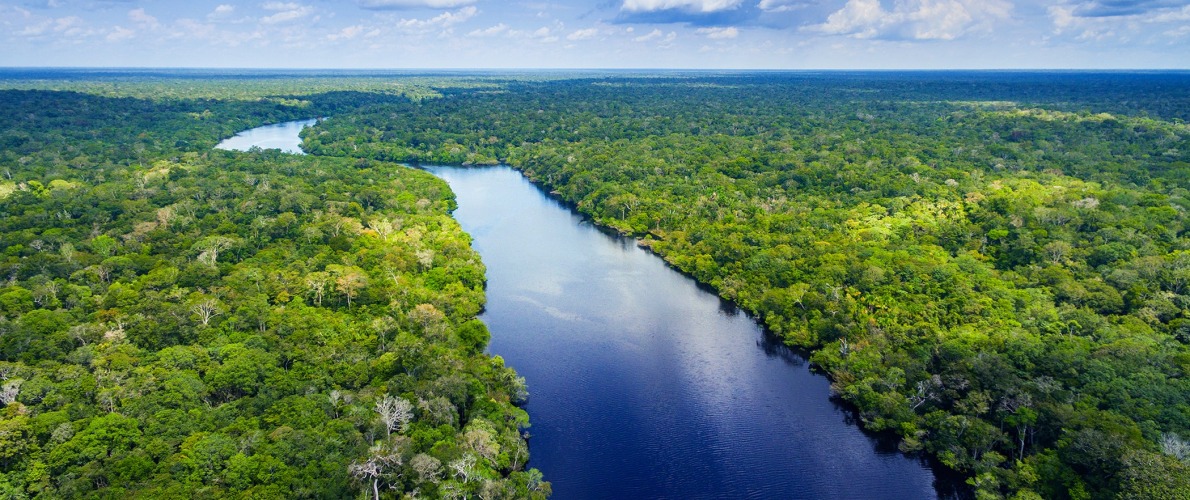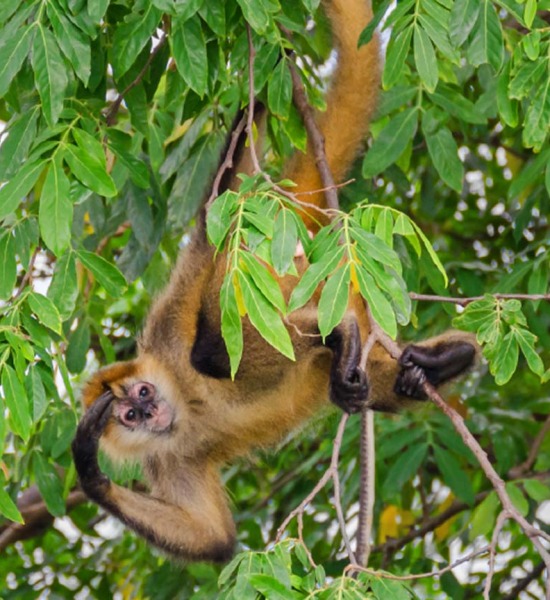
Protecting Côte d’Ivoire’s Primates
Support More Work Like ThisSupport More Work Like ThisOne of its most important natural landscapes is the wet and swampy Tanoé Forest.
-
Species at Risk
Roloway Monkey (EN), White-naped Mangabey (EN), White-thighed Colobus (VU), Ivory Coast Running Frog (VU), Rufous Fishing-owl (VU)
-
Carbon stored
Not calculated*
*(metric tons of CO2 equivalents) -
Partner
Swiss Center for Scientific Research in Côte d’Ivoire (CSRS)
-
26,655 Proposed Acres Conserved by
Designation
-
Project Cost: $92,646

26,655
One of its most important natural landscapes is the wet and swampy Tanoé Forest.
-
Species at Risk
Roloway Monkey (EN), White-naped Mangabey (EN), White-thighed Colobus (VU), Ivory Coast Running Frog (VU), Rufous Fishing-owl (VU)
-
Carbon stored
Not calculated*
*(metric tons of CO2 equivalents) -
Partner
Swiss Center for Scientific Research in Côte d’Ivoire (CSRS)
-
26,655 Proposed Acres Conserved by
Designation
-
Project Cost: £67,134

26,655
Since gaining independence in the 1960’s, the West African nation of Côte d’Ivoire has suffered from severe deforestation. Oil palm development, agricultural expansion, uncontrolled burning and logging have devastated its tropical forests, leaving only two percent of the nation’s primary forest intact. Despite this, Côte d’Ivoire still boasts some of the highest biodiversity levels in West Africa.
One of its most important natural landscapes is the wet and swampy Tanoé Forest. The area was recently identified by the IUCN Primate Specialist Group as one of West Africa’s highest priority sites for primate conservation. Species found within the region’s inundated forests include two of the most imperiled primates in West Africa: Roloway Monkey and White-naped Mangabey. The possibly extinct Miss Waldron’s Red Colobus was last seen in the Tanoé Forests and the area may be the species’ last refuge.
Despite its conservation value, the Tanoé Forest remains unprotected and is threatened by the aggressive expansion of oil palm plantations. Rainforest Trust is working with conservation partner, Swiss Center for Scientific Research in Côte d’Ivoire (CSRS), to create a community forest reserve protecting the Tanoé Forest. Ensuring the success of this project is critical to protecting Côte d’Ivoire’s remaining rainforests and safeguarding the future of some of Africa’s most critically endangered primates and frogs.
Explore the Tanoé Forest

The Endangered Roloway Monkey courtesy of Jiri Prochazka/Shutterstock

The Endangered White-naped Mangabey courtesy of Sander Meertins Photography/Shutterstock

The Vulnerable Beaudouin’s Snake-eagle courtesy of Upamanyoo Das/Shutterstock
Biodiversity
Located in south-eastern Côte d’Ivoire, the Tanoé Forest is one of the last intact examples of the West African Guinea Forest Ecosystem. This biodiversity hotspot is home to nearly 785 bird species, over 320 mammals, and an estimated 9,000 vascular plants.
The Tanoé Forest is a conservation priority due to its endangered primate populations. This includes two of the rarest primates in West Africa: White-naped Mangabey and Roloway Monkey. Miss Waldron’s Red Colobus may also persist in the forest. These, however, are not the only primates that depend on the forest for survival. The Vulnerable White-thighed Colobus also depends on the Tanoé Forest for refuge from encroaching development. Because much of the Tanoé Forest is a wetland, it also attracts large numbers of birds. At least 19 bird species in the forest have been identified as conservation priorities by BirdLife International, including the imperiled Rufous Fishing-owl, Beaudouin’s Snake-eagle, Green-tailed Bristlebill and Yellow-bearded Greenbull, all classified as Vulnerable or Near Threatened by the IUCN. Endemic reptiles and amphibians also abound in the forest, including species like the Ivory Coast Running Frog and Morerella cyanophthalma, a stunning orange frog endemic to the Tanoé Forest. Additionally, the region is a center for plant endemism and is home to several rare trees, climbing plants and orchids found nowhere else. Botanical inventories remain incomplete and new species are still expected to be found.
Challenges
Until recently, the principle threats facing wildlife in the Tanoé Forest stemmed from small-scale agricultural clearing, logging of tropical hardwoods, and poaching of monkeys and other species for bushmeat.
Large-scale monoculture plantations, however, pose new and growing challenges. Plans by palm oil companies to convert the entire area into oil palm plantations now represent the greatest danger to the Tanoé Forest. To halt this threat, CSRS has helped mobilize local communities to oppose palm oil expansion. These dynamic collaborations have been recognized internationally and CSRS and it’s local partners were awarded the 2009 Future for Nature Award and the 2012 Whitley Award for their efforts.
Communities
The local economy around the Tanoé Forest depends primarily on farming and, to a lesser degree, fishing. Local communities have already organized alongside CSRS to oppose oil palm threats, and, by doing so, have developed a strong sense of responsibility for the Tanoé Forest.
Forest management committees have been formed in eight villages. These committees, in turn, comprise two separate associations with jurisdiction over the entire Tanoé Forest area. Rainforest Trust’s protection efforts will involve the participation of local people on multiple levels. Awareness campaigns managed by CSRS will target communities; environmental education will be offered to local residents; and opportunities to assist in monitoring efforts will also be made available. In the future, there are also plans to reach out to adjacent communities in Ghana to initiate dialogue about a transboundary landscape conservation initiative and the organization of joint forest patrols.
Solutions
Rainforest Trust is working with local partner, Swiss Centre for Scientific Research in Côte d’Ivoire (CSRS), to establish a community forest reserve that will protect the Tanoé Forest.
Covering 26,655 acres, the reserve will protect habitat critical for several highly endangered primates in addition to a wealth of other species. Once established, the protected area will be managed by local communities under the supervision of the Wildlife Division of the Ministry of the Environment. After establishment of the reserve, the Wildlife Division will continue to provide research-based management guidance and support for participating communities. By ensuring the designation of the Tanoé Forest as an official community managed forest and training local residents in forest management practices, this project will make an important contribution to the long-term conservation of West Africa’s rarest primate species.



Partnering to Save Rainforest
Our partners’ ability to work with their governments and build strong connections with local communities ensures the successful implementation of our projects.
Learn More About This PartnerLearn More About This Partner
